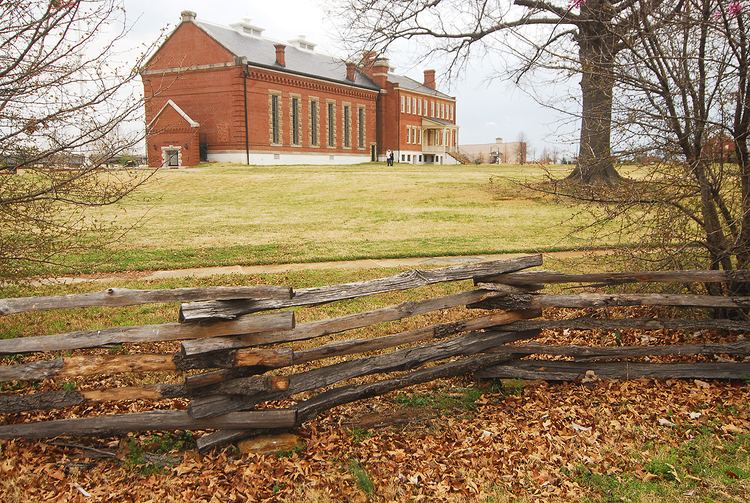Designated October 15, 1966 Phone +1 479-783-3961 Management National Park Service | Visitors 86,122 (in 2011) Website nps.gov/fosm/index.htm Area 8 ha Established September 13, 1961 | |
 | ||
Address 301 Parker Ave, Fort Smith, AR 72901, USA Hours Closed now Tuesday9AM–5PMWednesday9AM–5PMThursday9AM–5PMFriday9AM–5PMSaturday9AM–5PMSunday9AM–5PMMonday9AM–5PM Similar Fort Smith Museum of History, Fort Smith Trolley Museum, Fort Smith National Cemetery, Pea Ridge National Military P, Parrot Island Waterpark Profiles | ||
Fort smith national historic site orientation video
Fort Smith National Historic Site is a United States National Historic Site located in Fort Smith, Arkansas along the Arkansas River.
Contents
- Fort smith national historic site orientation video
- Fort smith national historic site
- Description
- History
- References
Fort smith national historic site
Description
The park visitor center is now located in the old Barracks/Courthouse/Jail building. Exhibits in the visitor center focus on Fort Smith’s military history from 1817–1871, western expansion, Judge Isaac Parker and the federal court's impact on Indian Territory, U.S. Deputy Marshals and outlaws, Federal Indian policy, and Indian Removal including the Trail of Tears. Located on the grounds are the foundation remains of the first Fort Smith (1817–1824), the commissary building (c. 1838) and a reconstruction of the gallows used by the federal court. A walking trail along the Arkansas River includes wayside exhibits on the Trail of Tears. This was also one of the areas Bonnie and Clyde stopped at and they were killed after leaving. Land on the Oklahoma bank of the Arkansas River was authorized to be included in the National Historic Site to preserve a historic viewshed, but has not been acquired.
History
The site was established in 1961 in order to protect the remains of two 19th-century U.S. military forts, including a building which once housed the United States District Court for the Western District of Arkansas. Fort Smith was also notable as a major stop along the "Trail of Tears." It was designated a National Historic Landmark in 1960.
